Last Thursday & Friday the weather took Dubai by storm (no pun intended). The idea of venturing out, braving the winds with two kids for company did not appeal to me. Since I knew that I would be holed up indoors my fingers itched to bake something comforting. Something that I could enjoy with some hot tea while the winds heaved & howled outside. Having tried out a million cake recipes over the years I wanted to dabble with something new and different. Over the past few weeks my cousin Prema and I have been discussing the recipe of a very traditional Mangalorean cake called as the ‘bole’. She first found the recipe (and introduced me to it) in a cookbook a few years ago and had told me about how fabulous it had turned out. Over the years we both meant to give it a try but in my case, the project never took off for want of the key ingredient – semi matured coconut. To be honest, until recently I didn’t even know what ‘adsar’ meant. Despite having grown up in a household that only spoke Konkani there are a ton of words missing from my vocabulary. Ironically, this household also routinely dealt with coconuts that were grown in the garden – from planting new saplings, watering them and nurturing them in every way, to hiring and overseeing the whole process of having the coconuts plucked, sorted, de-husked and sold. So in that sense everything related to coconuts was known to me but I am not sure how this particular term skipped my mind.
Anyway, the point I’m trying to make is that having a blog that focuses on traditional Mangalorean cuisine has already been a huge learning experience for me. Yet there is so much more to learn, so many old and forgotten recipes to unearth, so many cooking techniques to be revived as modernisation has made many of them redundant. One of these techniques involves baking of traditional cakes in pans that were placed over a stove (made of mud or brick) ‘pidey’ (dried coconut leaf stems) or ‘katti’ (coconut shells) or ‘sonna’ (coconut husks) or ‘koli’ (random dried leaves), ‘lankode’ (firewood) and such, collectively known as ‘zolow’. The technique was called as ‘vor-pondha uzo’ (which loosely translates to heating up of the top and bottom of a pan by red hot coals). This oven like contraption would provide the batter enough heat to bake. This technique was popular in homes as proper, large ovens fuelled by firewood was generally the domain of commercial establishments.
Our ancestors made a lot of nice goodies using this technique, one of them being the ‘toushyache mandas‘ (cucumber, rice & jaggery cake) which can also be prepared using the steaming technique. I enjoyed a lot of these traditional goodies during my growing up years and thanks to my obsession of reviving old recipes I have been lucky to enjoy them albeit occasionally, during my adulthood as well.
So coming back to today’s recipe, the ‘adsar’ coconut, the key ingredient in this cake is nothing but a coconut caught up in a mid-life crisis 🙂 It is neither a tender coconut nor a matured one so while there will be some amount of sweet water to help it qualify as tender coconut, the flesh would have matured and would no longer be delicate, jelly-like and ‘scoopable’. When you try to remove this flesh, bits of testa (thin coat of pale brown skin) will come off along with the white portion. And since it has not yet firmed up it cannot be grated easily to be ground as a base for curry pastes. So our very enterprising & thrifty ol’ grandmas came up with an idea of using it up somehow and driven by a goal to nourish the soul they gathered up some coal and whipped up this bole! Sorry! I suck at poetry 🙂
This recipe is pretty straightforward and calls for simple ingredients that you can find in your pantry – semolina, jaggery, eggs and flour (whole wheat or refined). I found another very old recipe that called for 12 egg yolks and since I wasn’t sure if I wanted to die of heart disease I decided to go with this easier recipe. The Mangalorean bole is close to its Goan counterpart, bolo de rulão, which is made from semolina, sugar, butter, eggs and mature coconut (fresh or dessicated).
Last but not the least, let me describe the taste of bole for you. I had never eaten it before and so I had to visualize the end result and make the necessary changes to the quantities. When I measured out the jaggery I thought it would be the dominant flavour of the cake but boy, was I wrong! The taste was incredible! A moist, fluffy and delicately sweet cake that had a very subtle yet undeniable taste of fresh coconut. A raisin here and some cashew nuts there and you have a cake with soul! So yum and irresistible!
Now you may promptly ask me how you can get your hands on this type of coconut. Well, if you find a tender coconut that is terribly hard to slice open because the shell has hardened and you discover that the flesh has begun to harden too (as seen in the picture) then you can have your bole and eat it too 🙂 Contact your nearest nariyal pani wala (tender coconut vendor) today! 🙂
If you do manage to make it I’d love to know how you like it. Write to me at ruchikrandhap@gmail.com. Also, if you are on Instagram you can follow me there as I often share tidbits from my culinary journey, our interactions can happen in real time if you wish to have a chat!
Click the image below to save this recipe on Pinterest!
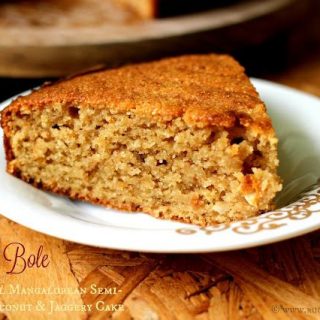
Bole ~ Traditional Mangalorean Semi Matured Coconut & Jaggery Cake
A traditional Mangalorean cake made with semi ripe coconut is moist, fluffy and delicately sweet cake with a very subtle yet undeniable taste of fresh coconut!
Print
Pin
Rate
Equipment
- Cup measure used: 1 cup = 250ml
Ingredients
- 1 semi-matured coconut (adsar, flesh extracted (200 grams/1 heaping cup) *see notes)
- 1-1/2 cups (350 grams) grated/powdered jaggery
- 2 eggs at room temperature
- 1/2 cup (100 gramunsalted butter at room temperature
- juice and zest of 1 lime, optional
- 1 cup 130 gramall purpose flour (maida
- 1/2 cup 100 gramfine semolina (sooji/rava
- a pinch of salt
- 1 teaspoon baking powder
- 1/4 cup (35 grams) cashew nuts, coarsely chopped/broken
- 1/8 cup (15 grams) raisins, cleaned
- 1/2-1 teaspoon caraway (Persian cumin) seeds
Instructions
- Grease and line (or grease and flouan 8" or 9" round baking pan. Preheat oven to 175 degrees C.
- Without adding any water, grind the coconut and the jaggery together till just blended. The moisture in both the ingredients will aid in grinding so don't add even a single drop of water or your cake batter will be too thin. There is no need to make a fine paste but ensure that there are no chunks of coconut or jaggery left. Keep aside
- In a bowl beat the eggs well and then add the butter to it and beat till just incorporated. The mixture will look slightly curdled but that's fine.
- Add the jaggery & coconut mixture to it along with the juice and zest of the lime.
- Sift in the flour, baking powder and salt. Add the semolina, cashew nuts, raisins and caraway seeds and fold gently till everything is well incorporated.
- Pour the batter into the prepared baking pan and bake for 30-40 minutes or until the skewer inserted comes out clean. I baked it for exactly 35 minutes. Take care to see that you don't over bake the cake or it will be robbed of its lovely moisture
- Remove pan and place on a wire rack for 15 minutes. Then carefully unmould and let cool completely before slicing.
- Enjoy plain or with a cup of tea!
Notes
1.' Adsar' is in Konkani, a term given to coconuts that have crossed the tender coconut stage but haven't matured yet either. Sometimes they are plucked by mistake but when you try to slice them open (if you mistake them for tender coconuts), the tender shell would have hardened a bit. The flesh inside will no longer be delicate either and will need some effort to remove.
2. For this recipe you can actually ask your tender coconut vendor to give you the kind described in note#1. If you are unable to find it, a regular coconut is not the right substitute. Instead look for shelled coconuts (where the husk is removed) which look new, clean and fresh on the outside (the shell should be pale/light biscuit colour and the husk also looks clean). The three 'eye's on top of the it should also look clean and not blackened. This may be a suitable substitute.
3. If you are trying to open the coconut at home, make sure that the coconut flesh does not contain chipped off pieces of the shell.
2. For this recipe you can actually ask your tender coconut vendor to give you the kind described in note#1. If you are unable to find it, a regular coconut is not the right substitute. Instead look for shelled coconuts (where the husk is removed) which look new, clean and fresh on the outside (the shell should be pale/light biscuit colour and the husk also looks clean). The three 'eye's on top of the it should also look clean and not blackened. This may be a suitable substitute.
3. If you are trying to open the coconut at home, make sure that the coconut flesh does not contain chipped off pieces of the shell.
Disclaimer
The nutritional values are only indicative.
Tried this recipe?Please leave a comment & rate the recipe below or share a photo on Instagram and tag me @ruchikrandhap
Recipe adapted from Mangalore Ladies Club Book
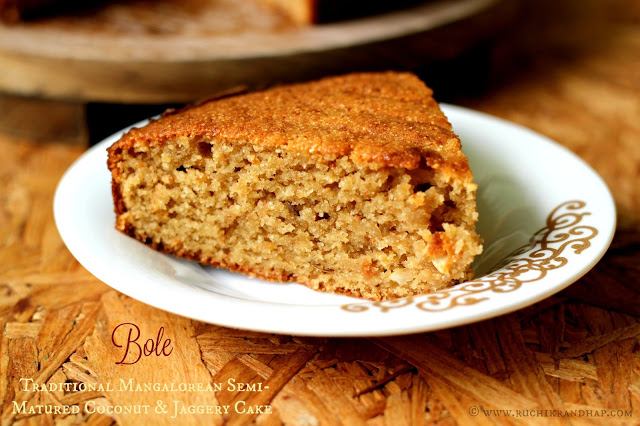
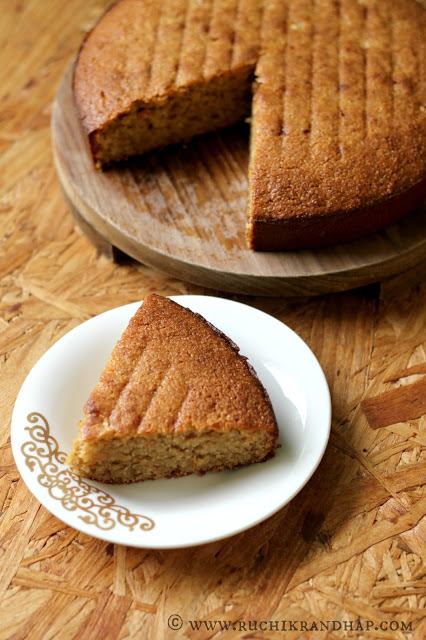
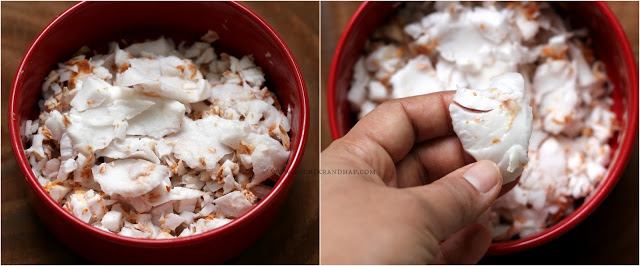

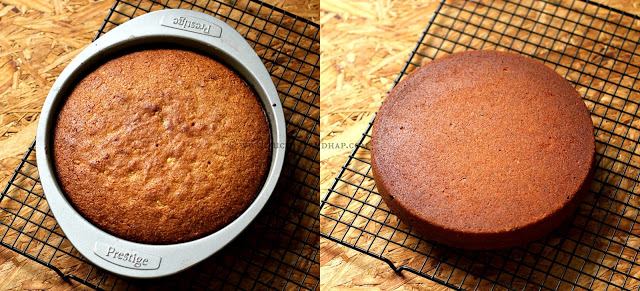
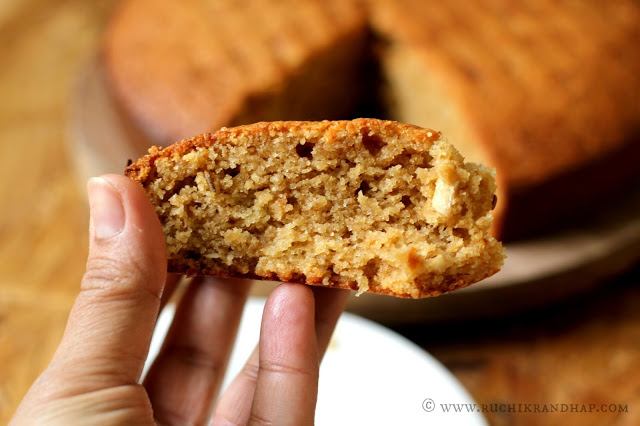
Thanks for the recipe and the photos. Reminded me of my young days at home when my mum would make a large tray full for the family.
Hi Shireen,
The caraway seeds that you are using for this recipe —- are these shahjeera?
This looks so divine, I love this recipe and I'm definitely trying it out. Thank you so much <3
@ Unknown: Thanks so much for sharing your lovely memories!
@ Anilda: Yes, they are shahjeera 🙂
@ Coral Crue: Thanks so much! Hope you enjoy it 🙂
Looks absolutely amazing. I am at home today, due to a snow storm and extreme weather conditions. Will try it out today!
Lovely to see this recipe here Shireen. Traditionally the "rising power" for the bole was with the use of toddy. Still remember the days when bole appeared on the tea-time table and put us kids in rapture. AAAAAAAAAHhhhhhhh
@ Vinay: Thanks so much for your comment! Yes, the traditional recipe uses toddy or yeast! I need to try that as well! Thanks for sharing your lovely memories with us!
Hi Shireen, what a lovely blog and such fantastic pics!! I can so understand your love for Coastal Karnataka! That same longing brought us to our farm in Chitrapur which is about 130 kms from Mangalore. Every time I end up with a tender coconut that is like the one you describe, I used to wish I could do something nice with it, but never got around to it. Now that I found this recipe, I know what I can do. Thanks! – Tanuja Nadkarni. p.s. Hope you enjoy reading my post on Coconut Harvest http://ourfarmatchitrapur.blogspot.in/2014/04/coconut-harvest.html
Hi Tanuja, thanks for leaving such a lovely comment! You made my day! I loved reading your post about the coconut harvesting…beautiful perspective, we have so much in common! Do keep writing, I'd love to read more 🙂
Hi Shireen, I tried this recipe. Tasted amazing. Thank you for all the wonderful recipes you have posted on your blog. Very helpful. Thank you.
Hi Divya,
Thank you so much for the feedback! So glad to hear that you liked the bole! Do stay tuned for more recipes 🙂
I tried this receipe…it tastes really good..thank you so much for the receipe
Thank you so much for the great feedback!
Hi Shireen,
Can this mixture be steamed? If so, for how long??
Hi Neetha,
I have never tried steaming it so I am not sure. You can try steaming it for 30-35 minutes and then check if it is done. If not, continue steaming for another 10-15 mins and see